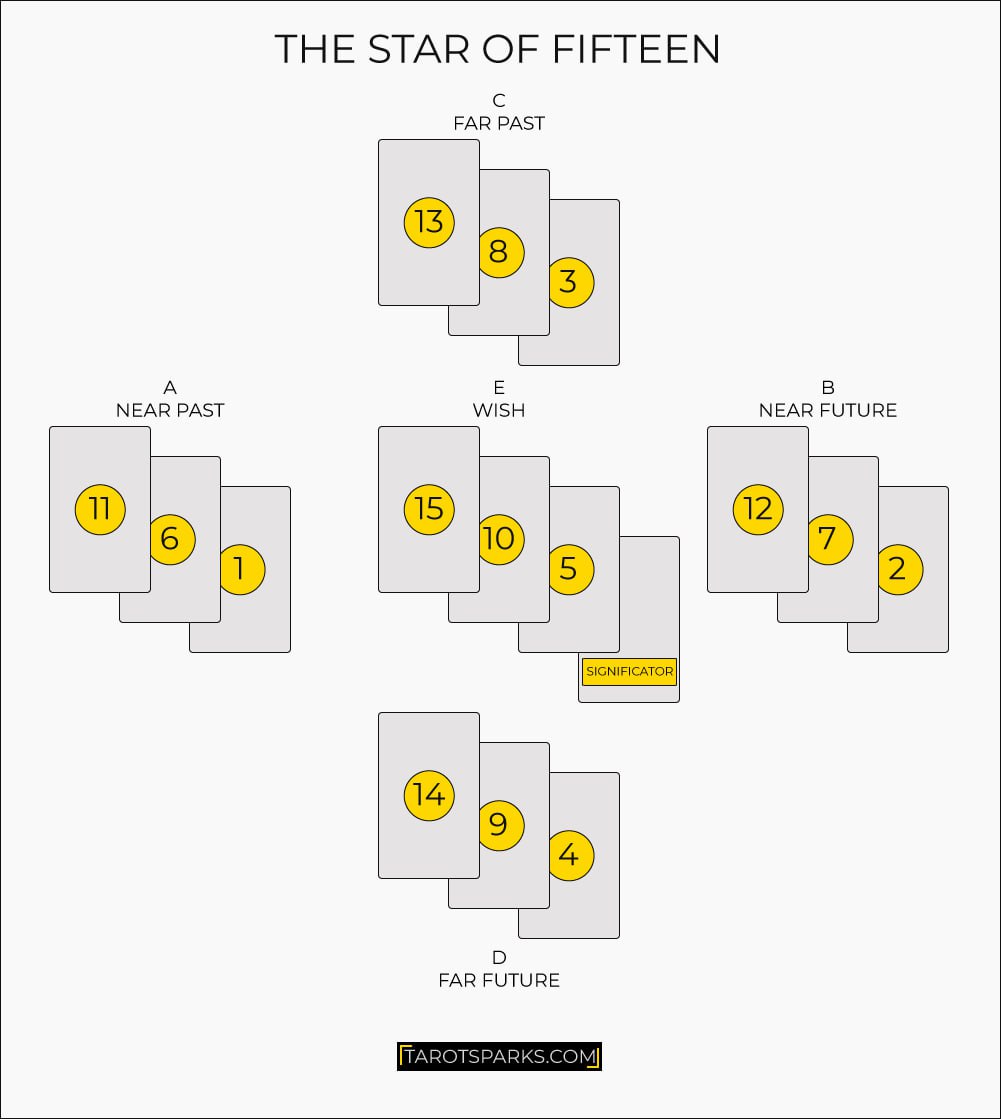The Star of Fifteen is a traditional continental spread that was very popular in Italy and France in the eighteenth and nineteenth century. It is wonderfully simple and perfectly suitable for general reading, but requires some experience, since each point of the star consists of an independent group of three cards. You can start using the Star of Fifteen spread when you feel capable enough to move on to more demanding classifications. This spread is ideal for cases where we want to learn more about predictions contained in other classifications.
How To Position The Cards In The Star of Fifteen Spread?
You will need an a Significator card that you choose in advance. Place it face up in the middle of the table. The questioner should shuffle the cards and cut the pile in half with his left hand. Collect all the cards and spread them on the table. Ask the questioner to choose fifteen cards and place them face down on a pile. Pick up the pile from the table, turn it over, take the cards from the top and place them on the table in order (from 1 to 15) as shown in the diagram:

How To Read The Cards In The Star of Fifteen Spread?
PAST – First, explain pile A. This represents the recent past and matters that still affect the present. Bundle C describes the more distant past and discovers the circumstances that influenced the recent past. By evaluating the two piles for their positive and negative meanings, you will be able to determine whether the situation has improved, worsened, or remained the same.
FUTURE – Bunch B describes the near future (about a month), while Bunch D discovers more distant events that may not happen until a year from now. These cards also show the nature of the development of events. Which pile seems more dynamic and positive? Which suits of cards dominate? Which area is the emphasis?
DESIRE – The three cards covering the personal card or Significator describe the questioner’s desire (E), hope, or secret longing. They do not refer to the past, nor to the present, nor to the future, but usually give a general impression of the situation or reflect the question that is most important to the questioner at the moment. These cards tell the questioner whether his heart’s desire will be fulfilled, while you will probably recognize the nature of this desire in piles B and D.